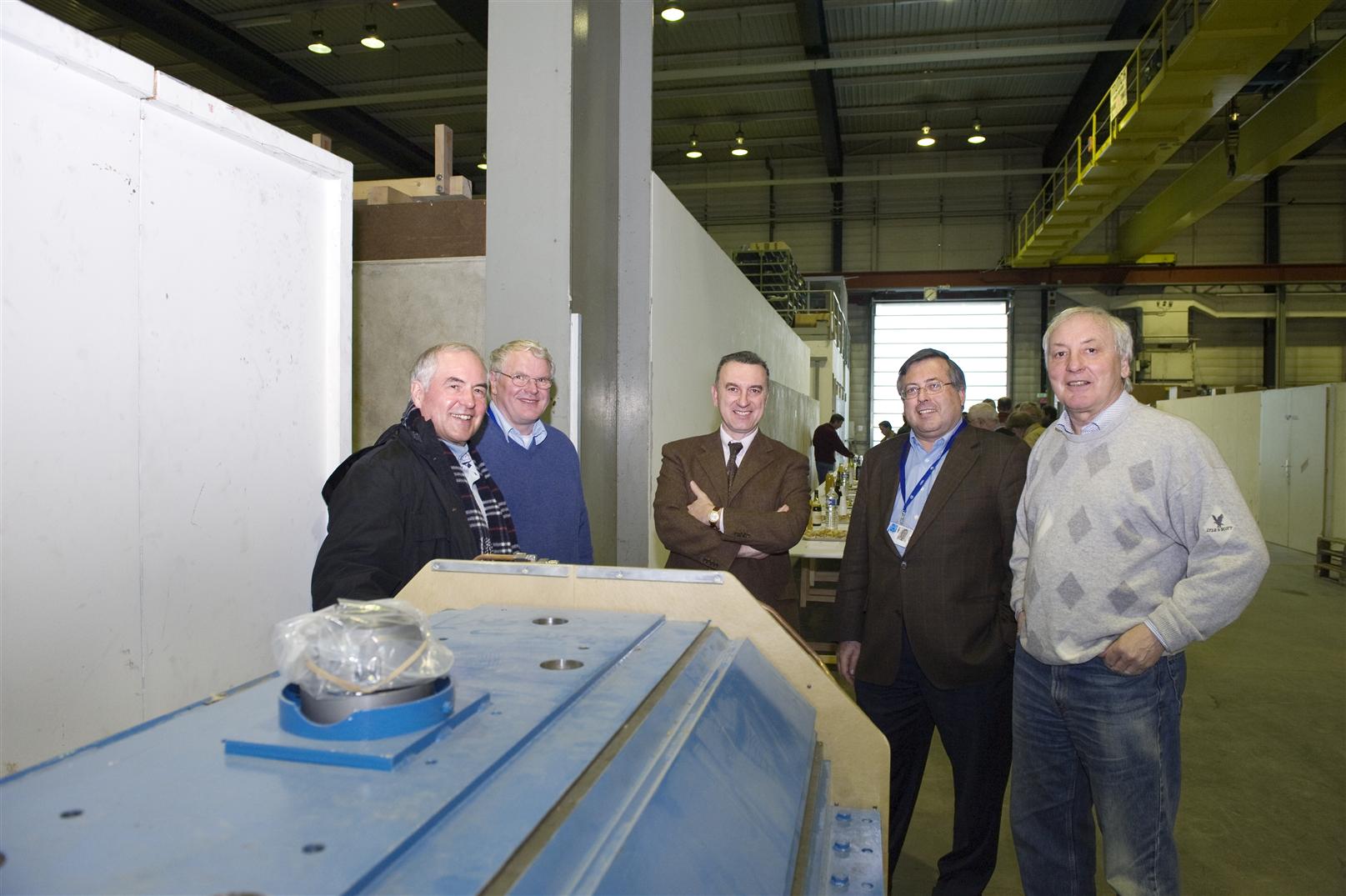Warm reception for warm magnets
A celebration marking the successful completion of the installation of all the normal conducting magnets in the LHC was held on 19 February.
A celebration making the successful completion of the installation of all the normal conducting magnets in the LHC was held on 19 February.
Present at the Normal Conducting Magnet celebration on 19 February were (from left to right): Willi Kalbreier, former Normal Conducting Magnet section leader; Karl Hubert Mess, former AT-MEL group leader ; Lucio Rossi, Magnets, Cryostats and Superconductors (AT-MCS) group leader; Philippe Lebrun, Head of the Accelerator Technology (AT) Department; Lyn Evans, LHC Project Leader.
You often hear the LHC described as a super-conducting particle collider. However, that’s not 100% true. In fact, there are 154 normal conducting or ‘warm’ magnets in the collider, about 12% of the total number, which will be indispensable in shaping the course of the proton beams when the LHC is switched on.
A celebration organised by the AT/MCS (Accelerator Technology/Magnets, Cryostats and Superconductors) group commemorating the installation of the last warm magnet was held on 19 February in Hall 867 – the location where each of the magnets, plus many spares, have been tested over the past 10 years.
The LHC is not a perfect circle and in some places it’s almost straight. In these sections, the magnetic intensity required to bend the proton beams is not as high as elsewhere. In these few parts of in the accelerator, for instance on each side of the four big experiments and where there are the so-called long straight sections, the magnetic intensity delivered by warm magnets is sufficient, hence their use.
Another advantage of warm magnets is their robustness when exposed to radiation. In the locations where the proton beams interact there are a greater number of secondary particles. An example is in the long straight sections LLS3 and LLS7, where collimators clean the beam by removing particles that are located far from the central distribution of the proton bunches. Using superconducting magnets here would be hard, as senior physicist and previous head of the Normal Conducting Magnet section, Willi Kalbreier, explains: "Collimators take away the secondary particles, but they are not stopped immediately and reach the magnets. If they heated a superconducting magnet above a certain point the magnet would quench," – therefore losing its superconducting ability and stopping the whole accelerator.
Nearly all the warm magnets were made especially for the LHC and travelled vast distances to reach CERN. 48 magnets have come from Vancouver, 40 from Protvino near Moscow and 65 from Novosibirsk in Siberia (travelling a staggering 5,000 miles to reach CERN). That leaves just one magnet that was not built from scratch for the LHC. Originally built for the ISR in the 1970s, it has now been recycled for use in ALICE.
Apart from being able to withstand relatively high radiation loads, warm magnets also have the advantage of being more affordable than superconducting magnets and easier to make and install, due to their comparative simplicity. The head of the Magnets, Cryostats and Superconductors group, Lucio Rossi, believes that this is where warm magnets come into their own. "This is the new challenge – to do something that is affordable. It is not impossible," he said.
At the celebration Rossi gave a speech thanking all the contributors for their hard work. "This has been the fruit of collaboration between CERN and many countries which have contributed financially and via their national laboratories which designed and made these magnets for the LHC", he said. "Today we are very happy".


